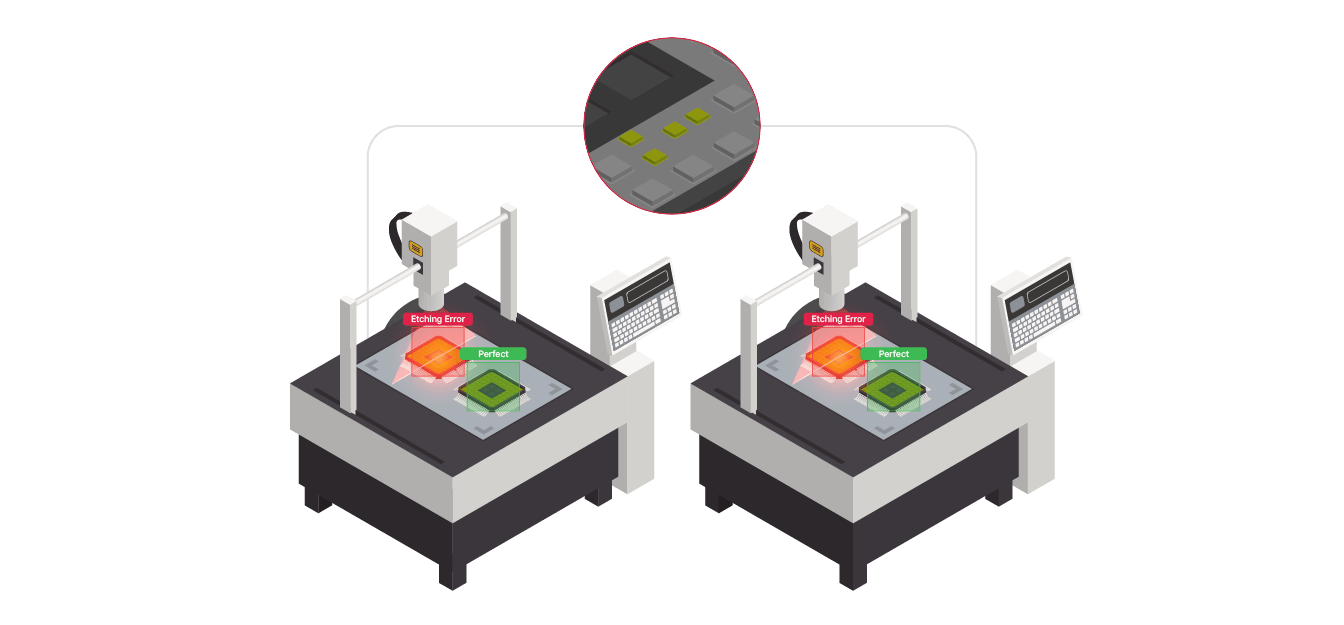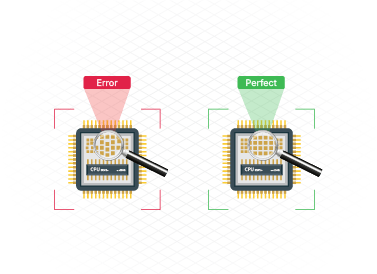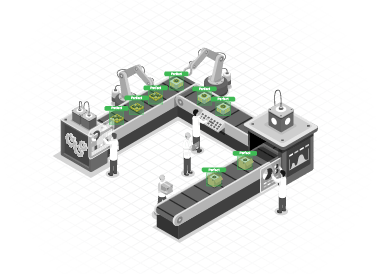Plasma Etching Endpoint Detection
Stop at the Right Moment. Control Every Nanometer.


In plasma etching, precision is everything. Etching for too long or stopping too early can compromise critical dimensions, reduce layer selectivity, and ruin yield. Traditional endpoint detection methods, like time-based controls or optical emission spectroscopy (OES), are often reactive, not predictive. AI-powered Plasma Etching Endpoint Detection leverages real-time camera feeds to visually monitor plasma characteristics. By analyzing glow patterns, intensity shifts, and arc behavior using machine learning, it predicts when to stop the etch, improving accuracy and protecting underlying layers.
Static timers don’t account for batch variation, chamber condition, or etch rate drift.
Emission-based or pressure-based systems often detect endpoint after it’s already passed.
Subtle anomalies in plasma arcs or intensity gradients can signal defects, if you can see them.
Operators lack real-time visual understanding of chamber dynamics during critical steps.
Tracks changes in plasma color, intensity, and pattern using high-contrast vision feeds.
Learns typical endpoint behavior across recipes and alerts for deviation or completion.
Adapts to different gases, pressures, and materials (e.g., Si, GaN, III-V) with retrainable models.
Triggers system alerts and interacts with tool PLC to suggest or automate etch stop action.


We collaborate with your tool vendor or internal automation team to identify optimal camera mount points within or outside the plasma chamber viewport, ensuring thermal safety and visibility.
Each etch recipe is captured and analyzed to build a baseline library of endpoint glow patterns, pressure shifts, and color transitions under different gases and process parameters.
The model is trained on known endpoint glow profiles across Si, SiN, SiO₂, and other layers, helping detect subtle shifts that indicate true endpoint vs. noise.
Once the AI model predicts an endpoint, it sends real-time flags to the tool controller, triggering a suggestive or automatic stop action. All endpoint data is logged for traceability and process audits.
Stay updated with the trending and most impactful tech insights. Check out the expert analyses, real-world applications, and forward-thinking ideas that shape the future of AI Computer Vision and innovation.
Some achievements do not arrive with loud announcements or dramatic celebrations. They arrive quietly, almost gently, carrying a kind of weight that only people close to the work fully understand. WebOccult’s Best Paper recognition at the IEEE was one such moment. Out of more than 450 research papers submitted from across the world, only five […]

CEO & Co-founder
People usually don’t think about logistics until there’s a delay in order delivery. On the other hand, there are millions of products that move across borders every single day, as their journey includes going through different ports, warehouses and distribution centres before the product reaches its respective owner. So there’s a lot that happens behind […]

CEO & Co-founder
When we discuss the ways to improve quality in factories today, one solution that often comes up is Computer Vision in manufacturing. Supervising a production line makes it clear how easily small issues can go unnoticed. A small crack, a misplaced center label, or a missing screw may seem irrelevant, but these small problems can […]

CEO & Co-founder